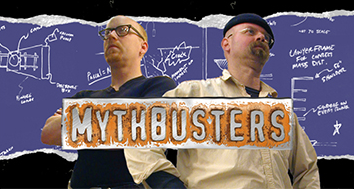How Do You Predict SEO Results?
Here’s the hard truth: you can’t predict SEO results with absolute certainty, just like you can’t predict the stock market or Bitcoin. But you can make informed projections about whether your SEO campaign is likely to drive traffic and conversions.
This article is going to bust common SEO prediction myths. Then, we’ll answer the question: ‘How do you predict SEO results?’ — and give you a 3-step SEO forecasting method that’s simple and works. But first, some helpful context.
Why is Predicting SEO Important?
Forecasting helps prioritize keywords and strategies that are more likely to drive profitable traffic — saving time, and money.
Nothing is worse than spending time and money optimizing for a particular keyword and realizing months down the line that the keyword is not bringing in traffic, or worse, that the traffic is not converting to leads (purchases and bookings).
What Data is Best For SEO Forecasting?
- Monthly Search Volume (MSV): The number of searches for a particular keyword (usually monthly)
- Google Impressions: The keywords a website appears on search for
- CTR (Click-Through-Rate): Number of clicks from a search
3-step SEO Forecasting Method
1. Forecast SEO Potential Using Real Search Data
Forecasting SEO starts with what you already have:
- Search Volume – how often target keywords get searched
- Click-Through Rate (CTR) – how often users click when your site appears in results
Search volume is readily available and the CTR is an estimate based on past performance or industry benchmarks.
You can use search volume to give you a wide estimate of how many clicks to expect for specific keyword rankings, but take it with a grain of salt.
Example: If a keyword gets 2,400 searches/month and top results get an average 18% CTR, you might theoretically expect around 432 monthly visits if you rank in that spot.
However, many search results get zero clicks because users can now get answers directly from Google through featured snippets, AI overviews, and other SERP assets). Therefore, expect the forecast to differ from the results.
2. Use Search Intent to Predict What Google Wants
Search engines provide results based on what people want to find when they search; for example, if all top-ranking pages for a particular keyword are buying guides, Google expects transactional content for that keyword, not blog posts.
Since Google is willing to rank those guides on page one of SERPs, it’s safe to assume that this is what people want as well. In essence, knowing what Google expects from your content is also knowing what your target audience wants.
To forecast SEO properly, identify which of the two primary types of search intent applies to the target keyword when analyzing the top 3–5 ranking results:
- Informational (e.g., “how does SEO work?”)
- Transactional (e.g., “buy SEO software”)
Then, match both format and intent.
Did you know?
SEO is 100% tax deductible in Canada and the US
Learn how to turn your tax bill into free SEO3. Content: Validate Your Forecast Through Page Performance
Both people and search engines need content. Once content is live, forecasting becomes real-time. Tools like Google Analytics and Search Console show which pages are ranking, what keywords triggered them, and whether people clicked or bounced. Use that data to refine your SEO model:
- Are you attracting the right intent?
- Are people clicking at expected rates?
- Which keywords are underperforming vs forecast?
Every piece of content is a live test. Forecasts improve as you publish more and track the results, especially when tied back to conversions.
For example, when a website begins to gain visibility, Google Analytics will show which keywords it is receiving impressions for. Impressions represent the keywords the site is appearing for in search — essentially, what Google believes the website is about. This provides a clear indication of whether the campaign was optimized according to the intended strategy or if there are missed opportunities.
A Final Word About SEO Forecasting Methods
How do you predict SEO Results? You create a biofeedback loop that’s consist of data, search intent, and content.
How to Predict SEO Results: The Data Feedback Loop
Data, search intent, and content work together to predict SEO results.
This continuous feedback loop helps us predict SEO results. Outside data provides a baseline to help us know search intent and set goals. When we create SEO content, it generates internal performance data that validates those goals, or calls for further optimization. By cross-referencing your results with external benchmarks, we can forecast and refine your SEO outcomes.
Is SEO forecasting really this simple?
Yes — because the results will never match the forecast, and the forecast relies on the results.
I can tell you 100 different things for predicting SEO results, but how many will you actually remember? Most articles have written thousands of words on this topic for no other reason than to fill up pages with words. Those articles can be cut in half without losing any meaning.
The truth is, whether you’re doing it yourself or hiring an expert, you’re still starting simple. If you’re committed — whether to an agency or DIY SEO — you’ll get internal data that blows all forecasts out of the water. The difference is, SEO agencies already know the terrain; so you skip the learning and focus on results.






